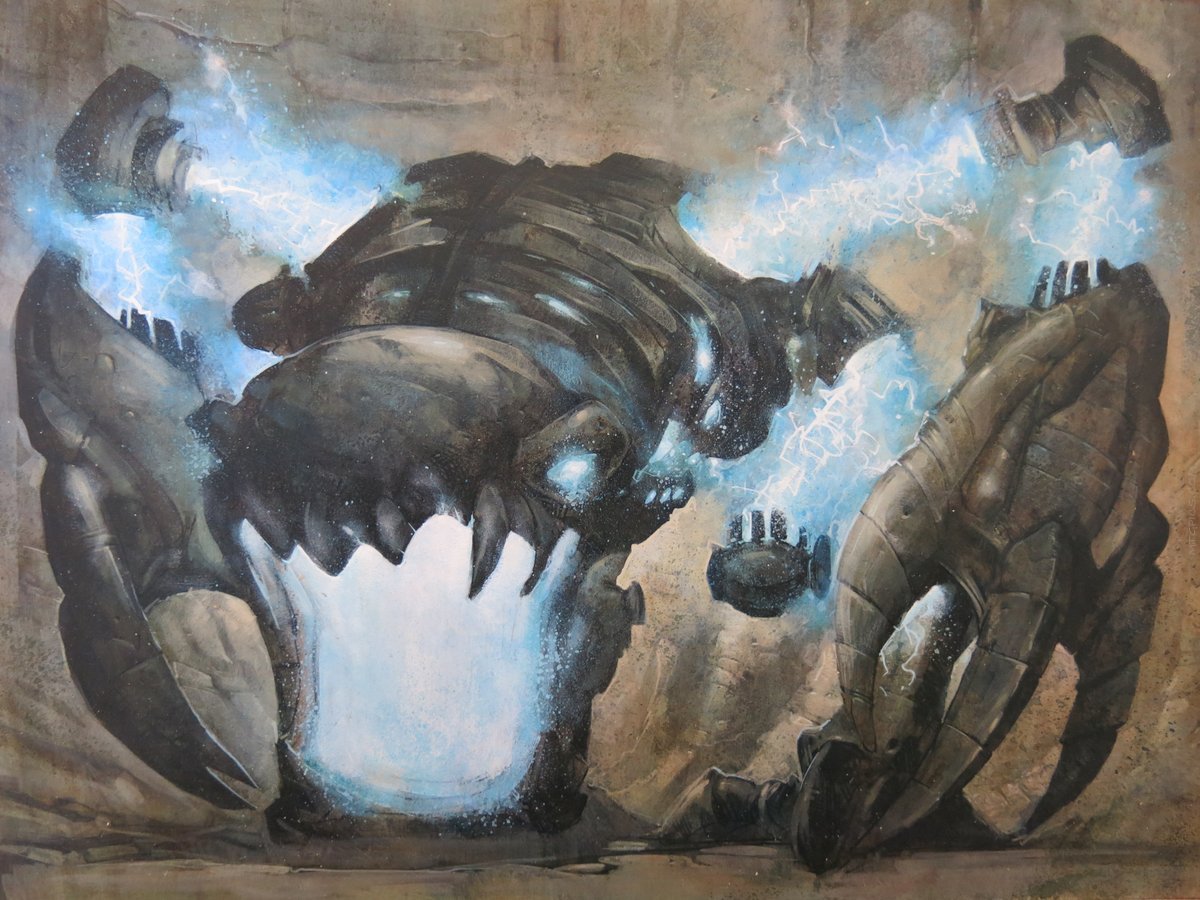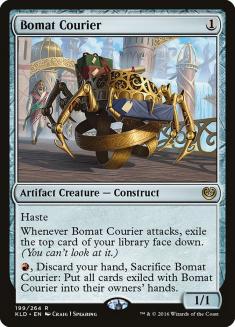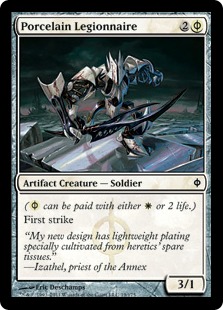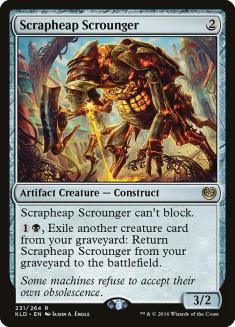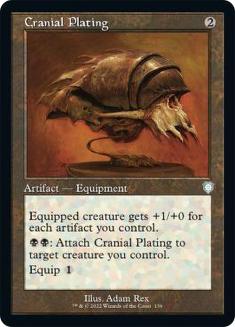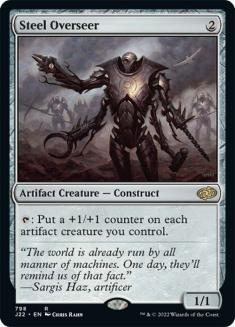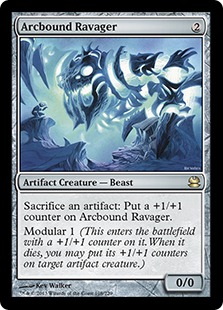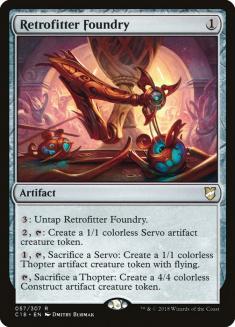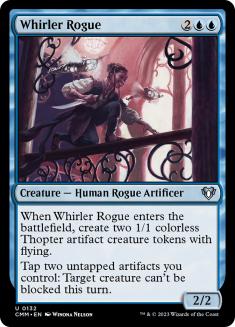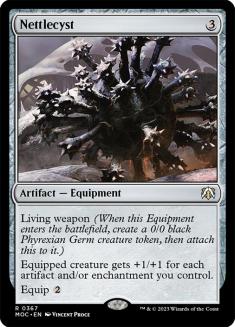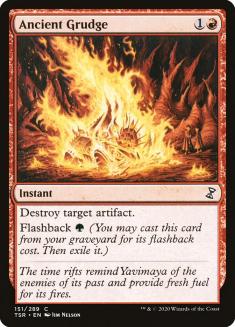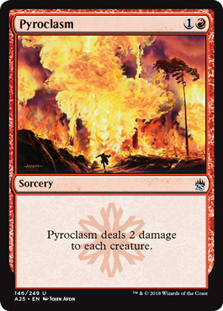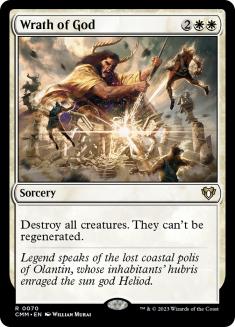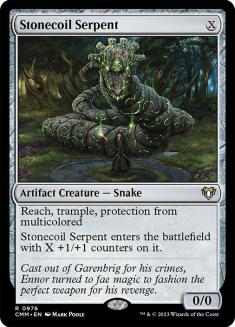We’re starting to get deep into the holiday season, gamers. Happy American Thanksgiving to those who celebrate! I hope that you have plenty to be thankful for, dear reader. I imagine that some of you are counting down the days to the return of Vintage Cube to Magic Online (MTGO), but that’s about a month out yet. What’s a Cube enthusiast to do?
Luckily, the well of Cube topics is plenty deep, and it seems to me that this is as good a time as any to do another archetype Deep Dive. Last week, I outlined my approach to building a Brothers’ War Twobert in which I deliberately didn’t push Artifact Aggro. The MTGO Vintage Cube also doesn’t support aggressive artifact decks, so it seemed appropriate to me to take some time to share my thoughts on this archetype to present a wider range of examples of what is possible in Cube.
Where to Find Artifact Aggro
Artifact Aggro is a loud aspect of heavily artifact-focused Cubes like the MTGO Artifact Cube and my Artifact Twobert, but it also shows up in quite a lot of the digital Cubes that don’t feature “artifacts matter” as a macro-theme. Most recently we saw it in John Terrill’s CubeCon Cartographia, and it also slots quite well into color-restricted Cubes like Autumn Burchett’s Bant Cube.
Typically, this archetype makes the most sense when featured in a Cube that doesn’t want to use artifact slots on fast-mana effects and is more about incentivizing players getting into combat. That’s why you don’t see this archetype in the MTGO Vintage Cube, and why it fits so well in Carmen Handy’s Proliferate Cube.
With Artifact Aggro largely pulling from the colorless column, there are many different ways to make this archetype work in Cubes of various power levels and sizes. I estimate the sweet spot to be a medium to high power level in a medium- to small-sized Cube, but regardless of where you’re trying to make this archetype fit, the core principles behind making it work remain the same. Let’s dive into what these principles are and how to make these decks tick!
What Is Artifact Aggro?
This is a pretty basic question, but it’s always worth taking the time to define your terms. In a sense, an Artifact Aggro deck is an aggressive deck that features artifacts, but that doesn’t tell the full story. Just having Bomat Courier, Porcelain Legionnaire, Scrapheap Scrounger, and an Equipment or two in your Mono-Red Aggro deck doesn’t make it Artifact Aggro, though these cards do all support both archetypes.
The defining aspect of Artifact Aggro, rather, is that a deck is aggressive and also cares about artifacts as a card type. If you had the opportunity to just add some Great Furnaces to a traditional Mono-Red Aggro deck, you probably wouldn’t. If your deck was trying to maximize a card like Cranial Plating, though, you absolutely would. These “artifacts matter” cards like Steel Overseer and Arcbound Ravager really define the archetype.
The best Artifact Aggro decks have a lot of synergies that cause their cards to come together in a way that is greater than the sum of their parts. The worst Artifact Aggro decks just have a lot of artifact creatures with no inherent synergies that die to Doom Blade and Disenchant alike.
Resilience to a little spot removal and ensuring that you actually have artifact bodies to move modular counters onto from your junky little Arcbound Workers tend to be the two most important hurdles to clear for a successful Artifact Aggro deck. Notably, this requires a lot more care in a singleton Cube environment than it does in formats like Modern Constructed, because these decks rely on having a good spread of solid payoffs as well as a long roster of cards with the right types.
How Should I Approach Drafting Artifact Aggro?
The highest priority for Artifact Aggro decks is getting your hands on big payoffs and the cards that allow the strategy to be resilient. You’ll want to fill your curve out with cards like Arcbound Stinger and even Ornithopter once you have enough of the most important cards, but these cards tend to be dramatically below rate as early picks in a draft. Cards like Cranial Plating that can turn any of your weaker creatures into huge threats and cards that present multiple bodies are often your highest picks. Whirler Rogue is actually among the more powerful cards that you can have at the top of your Artifact Aggro curve due to its general resilience to spot removal and ability to break through in combat.
Generically powerful cards, specifically those that grant card advantage, will also be high priorities. Retrofitter Foundry is a pretty powerful Cube card that gets even more berserk when your deck is otherwise capable of creating Thopters. Karn, Scion of Urza is a middling Cube card that gets dramatically better once you have a high volume of artifacts in your deck. Stuff like Nettlecyst, Master of Etherium, and Thought Monitor will also set your Artifact Aggro deck on the path to consistently presenting meaningful threats.
When it comes to drafting Artifact Aggro, though, you almost need to pay more attention to what you’re passing than what you’re picking. For starters, you need to be comparing the supporting cast for your deck – those Memnites and Signal Pests – to the average creatures and/or removal spells for other archetypes. You want to ask yourself how well off you’re going to be if your opponent just casts Lingering Souls or Young Pyromancer into Lightning Bolt if you’re seeing those kinds of cards next to Hope of Ghirapur. The more the other archetypes look like traditional Cube staples, the more wary you should be of Artifact Aggro, given how much average card quality matters in games of attrition.
You also really need to watch out for Constructed-level answers to artifacts. If I see an Ancient Grudge in Pack 1 I know that the Cube designer is more afraid of artifact decks succeeding than they are excited about supporting them. This archetype is more fragile than a lot of players and designers might realize, given how hostile Constructed formats must be to keep their 60-card counterparts in check, and I would not take it as a given that Artifact Aggro is actually competitive in every Cube where it’s featured.
Similarly, I’m pretty wary of just efficient sweepers like Pyroclasm and Wrath of God being present if I’m trying to assemble a critical mass of creatures. The more generically good the opposition is, the less likely it is that you should be moving in on Artifact Aggro. The archetype is simply more cool than powerful in singleton environments.
How Fun Is Artifact Aggro?
That said, I do find that Artifact Aggro is very cool. Seeing an Arcbound Ravager in a pack does always make me a little giddy. It’s just a huge part of Magic’s history, and one that I and many others are plenty nostalgic for. Artifact Aggro decks can generate some very satisfying combat math, though modular is admittedly a bit crunchy for some players.
When it comes to playing against Artifact Aggro, there’s nothing that really makes it markedly more or less fun than any other aggressive deck. It’s pretty easy to understand what’s going, and the games tend to be about managing opposing threats properly. Just some good, honest Magic.
Artifact Aggro is most at home in a Cube where blocking is a big part of a lot of the games. To that end, Whirler Rogue is the card that I find to be most groan-inducing when it comes to supporting the archetype. A lethal unblockable Cranial Plating’d threat can be a pretty deflating way to end an otherwise back-and-forth game. That said, there are plenty of environments where cards like Whirler Rogue are great fits, and it can be exciting to see games end in this fashion from time to time. It is just something to be mindful of if it’s happening in every draft, which can be the case if blocking is otherwise a big part of the gameplay.
How Do I Support Artifact Aggro as a Cube Designer?
The most essential aspect of supporting Artifact Aggro in Cube is including a high volume of artifact creatures. A lot of this can be accounted for in the colorless column, and as we get more and more generally reasonable artifact creatures like Stonecoil Serpent, this gets easier all the time.
Of course, this shouldn’t start and stop in the colorless column. If you really want Artifact Aggro to work, you need to include a good volume of colored artifact creatures, too. In fact, I’d go so far to say that you want to exclude some of the more generically powerful threats in favor of more artifact creatures if you really want to incentivize somebody to draft Artifact Aggro. The more slots for aggressive decks that you allocate to artifact creatures, the easier it is to pivot between Artifact Aggro and generic beatdown decks. The easier that it is to successfully pivot, the more inviting an archetype is to draft.
Lastly, the biggest potential pitfall that you can run into supporting Artifact Aggro as a Cube designer is making the environment too directly hateful. Ancient Grudge really isn’t necessary against a team of mostly below-rate creatures that attack and block. The average Artifact Aggro deck doesn’t have great tools to beat a sweeper either. Honestly, some games can be challenging enough when your Steel Overseer eats a Fatal Push. I do think having some spot removal is both good and important; just remember that Artifact Aggro in Cube is delicate. It’s not like the resilient monstrosities that we’ve seen in Constructed.
Artifact Aggro can fit into many Cubes, though it requires some finesse to balance in an engaging way. It is an archetype that I adore, and my Artifact Twobert among my favorite personal Cube designs. The broad-strokes notes that I have for you if you’re also a fan: more artifacts, more blocking, and less hate.

